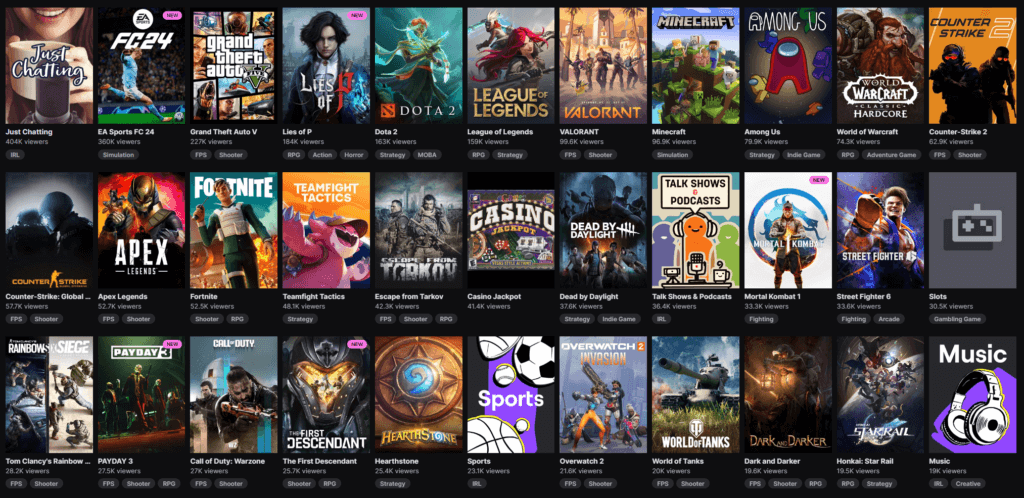Is Influencer Marketing still relevant?
19 September 2023
Is influencer marketing really dying? With a stark decline from the peak 6.5 million viewers for Twitch back in 2020 during the pandemic to Youtube also dropping 12.4% since 2020 as it also saw notable losses in total hours streamed and concurrent viewership. Of course, markets will always ebb and flow, but some in the industry do tend to interject by stating that the streaming industry is on a steady decline, and thus utilizing this market isn’t what it’s cracked up to be. We will review these insights with a steady hand and use real-life examples of why some may think they’re soothsaying on the viability of influencer marketing.
So Why The Skepticism On Influencer Marketing?
For this story, we will have to dial back the clock to even pre-pandemic days. Going from 2016 to 2017, influencer marketing was all the rage and making waves as a great accessible avenue for any industry for great ROI. However, April 2017 proved to be a watershed moment for influencer marketing overall as the notorious Fyre Festival scam caused a massive stir. For the uninitiated, it was a music festival conceived by con artist Billy McFarland which was heavily promoted by influencers such as Ja Rule, Kendall Jenner, Emily Ratajkowski, and other notable personalities. On the morning of the festival, its attendants were met with disaster as nothing was prepared, with the event actually not taking place.
While this is an extreme example on the spectrum, there was noticeable fatigue around the authenticity of influencer marketing towards the end of 2017, going into 2018. However, while consumers became more savvy, companies needed to refine their approach, as is the case with any new marketing avenue. Fast forward to today, and influencer marketing is by no means dead and integrated as a mainstream part of marketing. The gaming industry is the most effective environment for it to do well.
How effective is Influencer Marketing today?

That depends. We’ve already touched on how influencer marketing can fail, which illustrates how there are successes and failures, as with anything in life. This is no less different for the gaming industry, especially with the indie game market. We can’t even count how many times we’ve heard of developers who’ve set aside a budget for a campaign and received a poor to average return on investment and immediately declared it ineffective and not to consider it again.
As with anything, marketing takes time and is a constant and consistent process. A singular campaign or two won’t immediately make a game popular or boost sales significantly, but it’s a string of trial and error and finding the right tempo and audience to optimize your efforts. The same rules apply to influencer marketing on a deeper level, as being off on any variable can mean flat results. However, despite the changes in audience sentiment towards brand authenticity and the decline in statistics over the last few years, there are multiple great examples of how effective influencer marketing can be if done right.
The most exciting thing about this is the amount of value you can get out of a campaign which gives you plenty of breathing room to iterate, adjust, and experiment, which is vital for nailing your marketing. Looking at examples from our work, we’ve been able to run with multiple budget levels, including $20,000 and under. There is some flexibility in spend as you can even get value from as little as $500.
With this type of spend, it’s wise to have your campaign built for awareness by utilizing multiple micro-influencers. Whether your budget is within this ballpark or if you’re able to target larger influencers, it is vital that you pay special attention in scouting out each individual influencer as even though they may have the same data points, whether it’s audience size or engagement level; the value you could get from either could vary greatly. One small example of this is going with a particularly smaller influencer whose cost was under $100 for a campaign. By the end of the campaign, over 5 conversions were made, gaining a significant ROI. It is worth noting that Steam’s UTM integration has been unreliable for quite some time, and tracking has always been an issue in getting accurate metrics. They did plan to update and improve this back in July, however.

A final point of value on influencer marketing is the repurposable content you can get out of a singular campaign (with permission, of course), which you could always feed back into your other paid ad campaigns or social media strategy. All in all, influencer marketing is here to stay and remains a really effective marketing strategy that thrives within the gaming industry. Just because you may have had 1 or 2 campaigns that have flopped or a sour experience with a particular influencer doesn’t rule out the amount of value you could get if done right. If you’ve ruled this out in your overall marketing strategy, it may be wise to take another look or even use platforms such as Lurkit, which can simplify the process and get the most out of your campaigns.
Clem van der Merwe
Content Manager | Infernozilla

